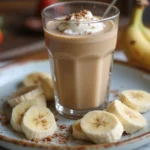Coffee smoothies are the perfect blend of energy and refreshment, offering a delicious way to kickstart your day.
With creamy textures and rich flavors, these smoothies are a delightful alternative to traditional breakfast options.
I stumbled upon this recipe while experimenting with coffee and smoothies, and it quickly became a favorite for mornings on the go.
These banana-free coffee smoothies are not only refreshing but also customizable, allowing you to incorporate your favorite flavors and ingredients.
The History and Cultural Significance
• Coffee smoothies trace their origins to the rise of smoothie culture in the late 20th century, especially in the United States.
• The dish evolved as people sought healthier breakfast alternatives, blending coffee with fruits and dairy for a nutritious start.
• In many cultures, coffee is celebrated as a morning ritual, symbolizing energy and awakening, making smoothies a natural extension of that tradition.
• While many variations exist, the banana-free version stands out for its creamy texture, often achieved through yogurt or nut milk.
Recipe Overview
Nutritional Information (per serving)
Ingredients
Essential Equipment Guide
Blender: A high-quality blender is essential for achieving a smooth, creamy texture. Look for one with a powerful motor and multiple speed settings to effectively blend coffee and other ingredients.
Measuring Cups and Spoons: Accurate measurements are crucial for consistent results. Use standard measuring cups and spoons to ensure the right proportions of ingredients.
Serving Glasses: Aesthetic presentation enhances the appeal of your smoothie. Choose clear glasses to showcase the beautiful layering and colors of your drink.
Preparation Methods
Blending: This technique is crucial for achieving a smooth and creamy texture in your smoothie. Start by adding the liquid ingredients first, followed by solids, to ensure even blending.
Measuring: Accurate measuring of ingredients is key to balancing flavors and achieving the desired consistency. Use standard measuring cups and spoons for best results.
Layering: For a visually appealing smoothie, consider layering the ingredients when serving. This not only enhances presentation but also allows for different flavor experiences in each sip.
Step 1: Prepare Ingredients
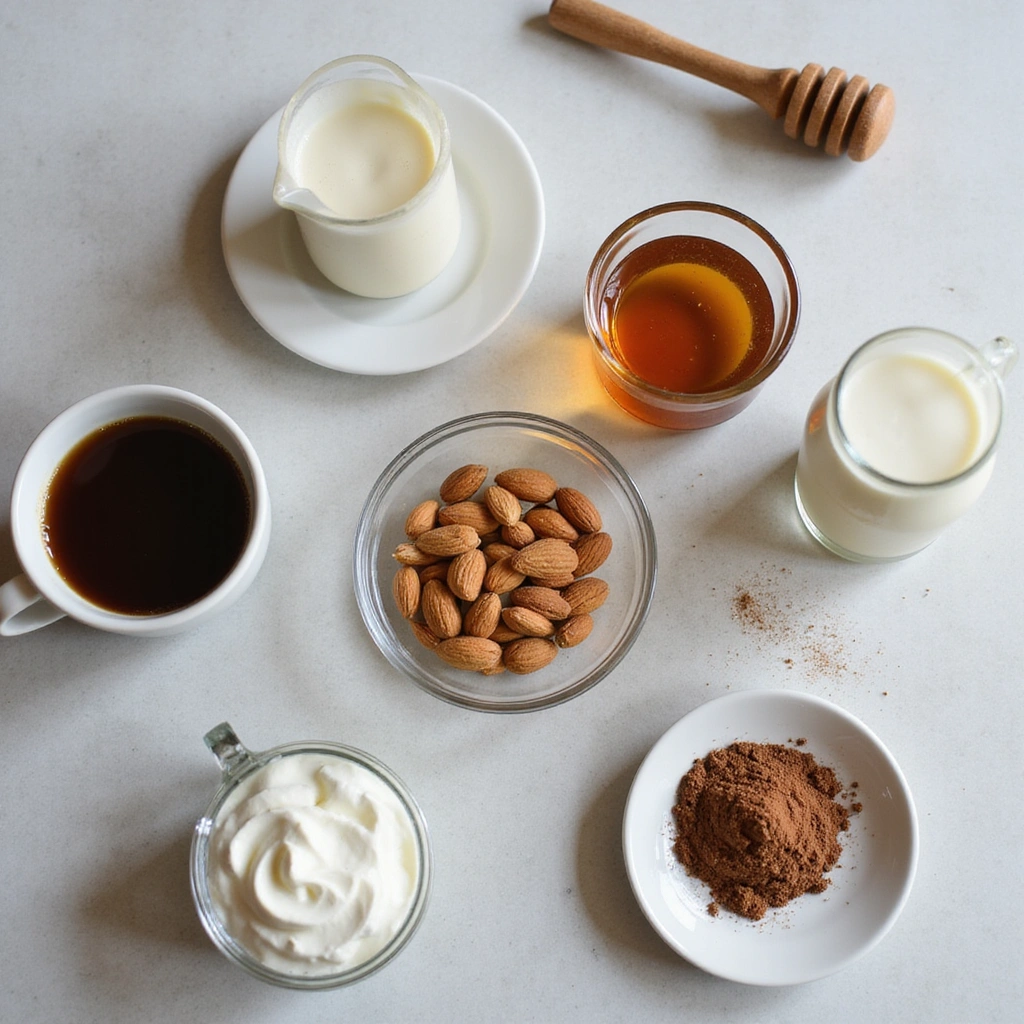
Gather all your ingredients on the countertop.
Make sure your brewed coffee has cooled to room temperature.
This prevents the smoothie from becoming too warm during blending.
Check that you have everything ready before you start blending.
Step 2: Measure Ingredients
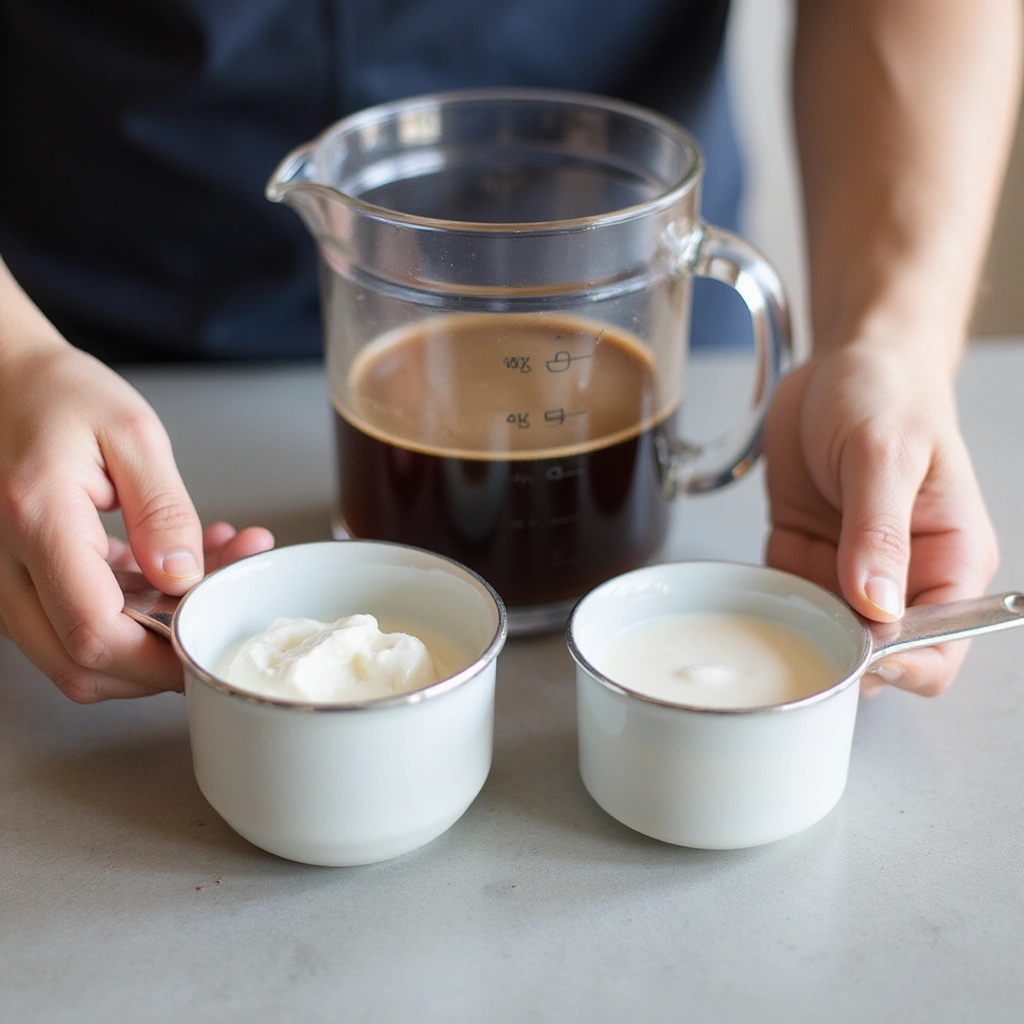
Use measuring cups to accurately measure out the Greek yogurt and almond milk.
For the coffee, pour one cup into the measuring cup.
This ensures that your smoothie has the right consistency and flavor balance.
Double-check your measurements to avoid any discrepancies.
Step 3: Blend the Base
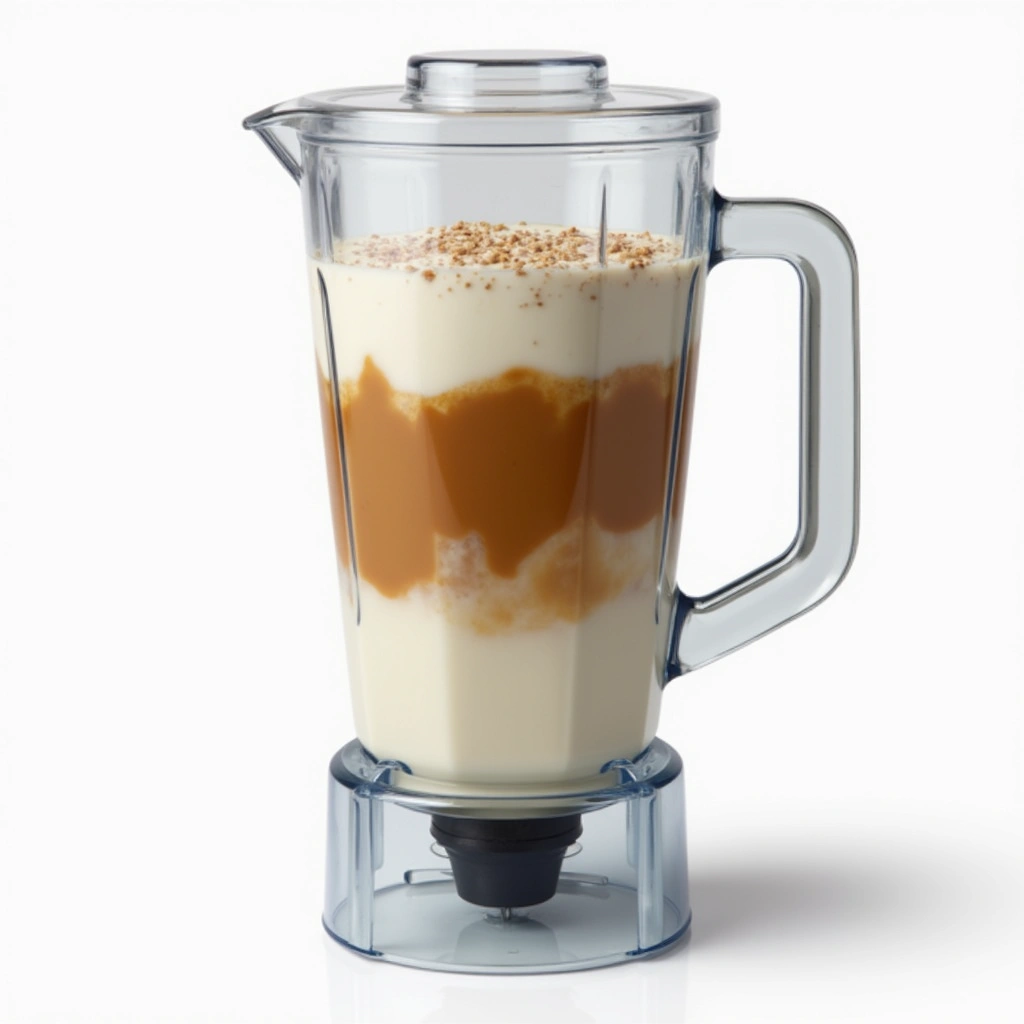
Add the measured coffee, Greek yogurt, and almond milk into the blender.
Start blending on a low setting, gradually increasing the speed.
This helps to combine the ingredients smoothly without splattering.
Blend until the mixture is creamy and well combined.
Step 4: Add Flavorings
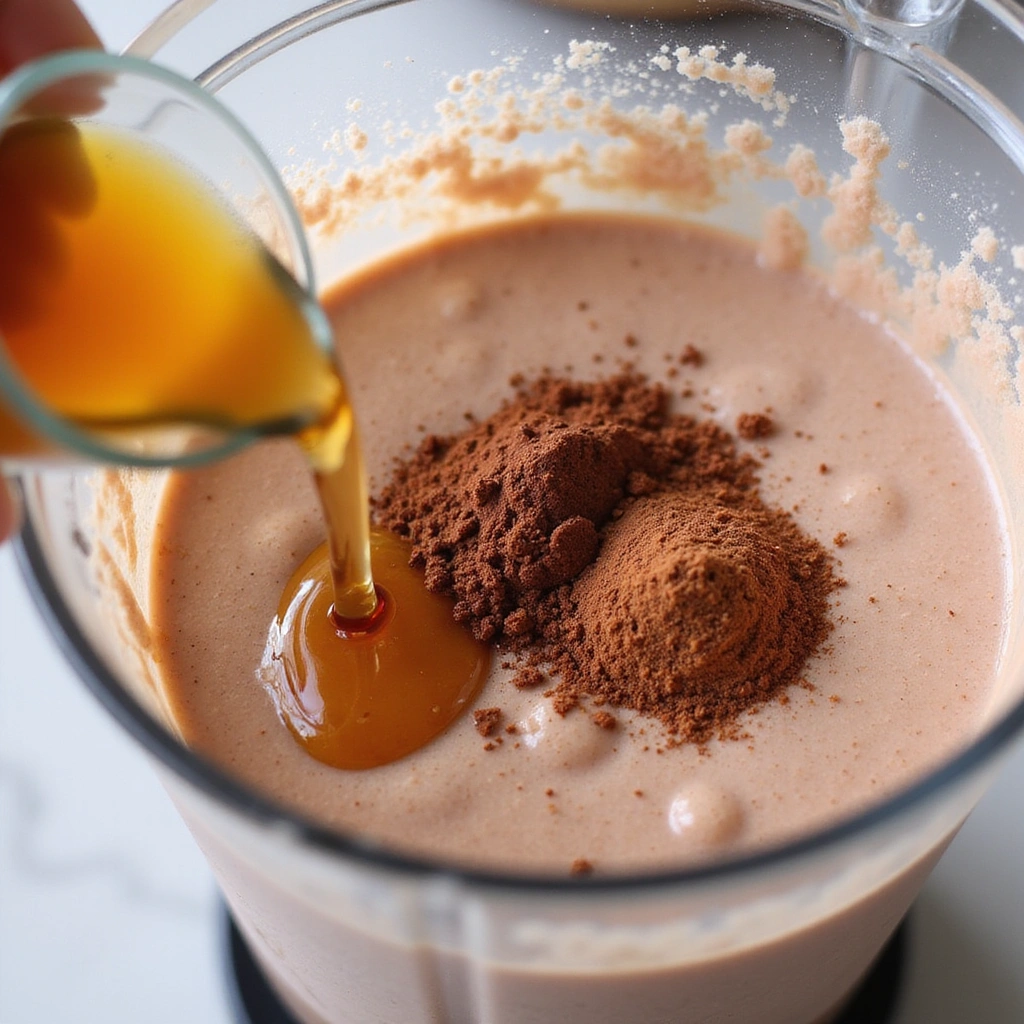
Once the base is smooth, add the honey, vanilla extract, and cocoa powder.
Blend again until all ingredients are fully incorporated.
Taste the mixture and adjust sweetness if necessary by adding more honey.
Ensure the cocoa powder is well mixed to avoid clumps.
Step 5: Check Consistency
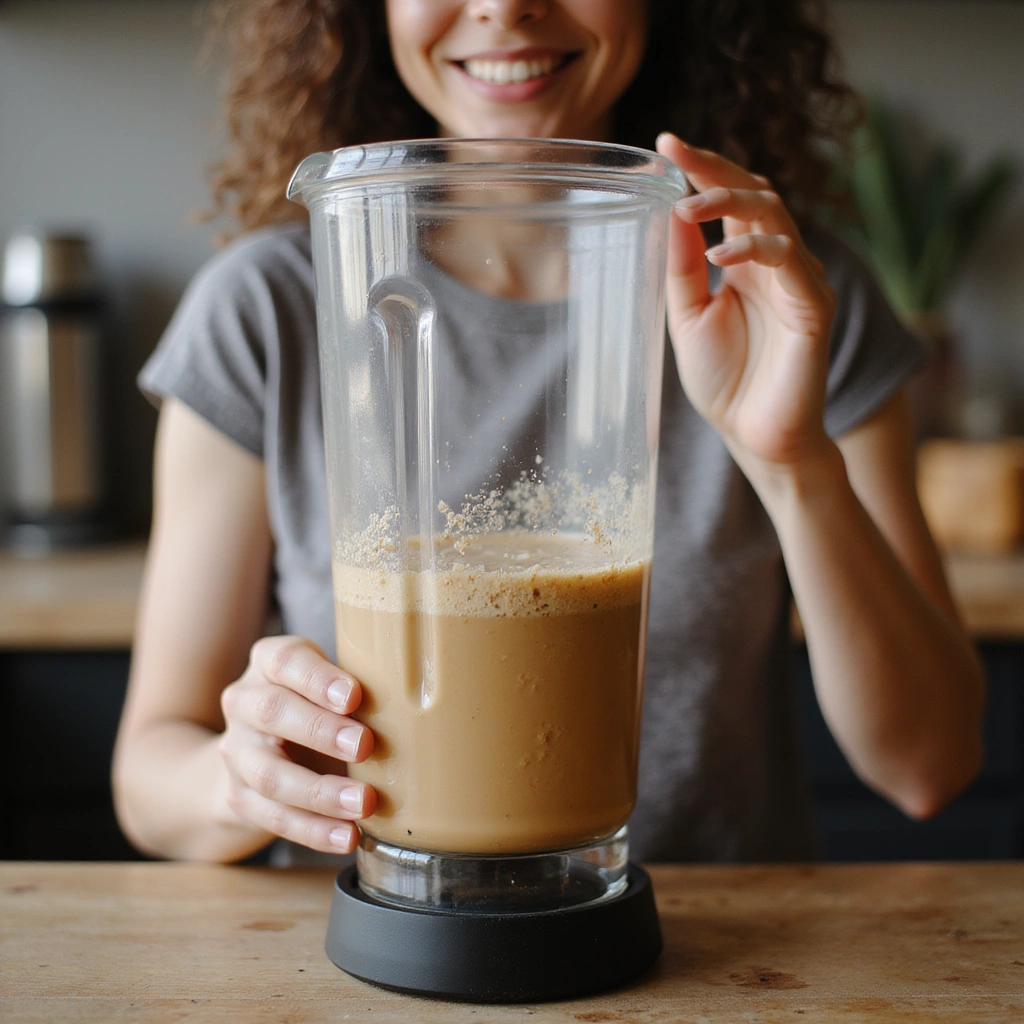
Stop blending and check the consistency of your smoothie.
If it’s too thick, add a little more almond milk and blend again.
The texture should be creamy yet pourable.
Make sure to taste it for flavor balance as well.
Step 6: Pour into Glasses

Grab your serving glasses and carefully pour the smoothie into each glass.
Fill them about three-quarters full to leave room for garnishes.
Take your time to avoid spills and ensure a neat presentation.
Consider using a funnel for easier pouring if desired.
Step 7: Add Garnishes

Top each smoothie with a dollop of whipped cream if desired.
Sprinkle cocoa nibs or cocoa powder on top for added texture and flavor.
This not only enhances the appearance but also adds an extra layer of taste.
Serve immediately for the best experience.
Step 8: Enjoy Your Smoothie

Serve the smoothies chilled with a straw or a spoon.
Enjoy them as a refreshing breakfast or an energizing snack.
Take a moment to savor the rich flavors and creamy texture.
Consider pairing it with a light snack for a complete meal.
Critical Timing and Temperature Guide
Blending Time: Blend for about 1-2 minutes until the mixture is completely smooth. Look for a creamy consistency with no lumps. Avoid over-blending as it can warm the smoothie too much.
Cooling Time: Allow brewed coffee to cool for at least 15-20 minutes before using. This prevents the smoothie from heating up and maintains its refreshing quality. Use ice cubes if in a hurry, but be cautious of dilution.
Serving Temperature: Serve immediately after preparation for the best flavor and texture. A chilled smoothie is far more refreshing, so ensure your ingredients are pre-cooled.
Pro Tips for Coffee Smoothie Recipes No Banana Creamy And Refreshing
• Ingredient Selection: Use high-quality coffee for a more robust flavor. Freshly brewed coffee enhances the overall taste of the smoothie.
• Preparation Secret: Freeze leftover coffee in ice cube trays. This way, you can add coffee ice cubes to keep your smoothie cold without diluting it.
• Temperature Management: Make sure all ingredients are at room temperature before blending for a better consistency.
• Texture Enhancement: Adding a little bit of chia seeds can improve the texture while boosting nutritional value.
• Flavor Layering: Experiment with flavored coffee or add spices like cinnamon or nutmeg for a unique twist.
• Make-Ahead Strategies: Prepare the base ingredients the night before, and refrigerate them. Blend in the morning for a quick breakfast.
• Restaurant-Quality Finishing Touches: Drizzle chocolate syrup or caramel on the inside of your serving glass before pouring the smoothie for a professional look.
• Equipment Optimization: Invest in a high-speed blender for the best texture; it makes a significant difference in the creaminess of smoothies.
Troubleshooting Common Issues
• Texture Too Thick: If your smoothie is too thick, it may be due to too much yogurt or not enough liquid. Add a splash of almond milk and blend again until you reach the desired consistency.
• Flavor Too Bitter: If the smoothie tastes bitter, it could be from the coffee. Balance it out with extra honey or a pinch of salt to enhance sweetness.
• Not Creamy Enough: If your smoothie lacks creaminess, try adding more yogurt or a scoop of ice cream to achieve that desired texture.
• Too Sweet: If your smoothie is overly sweet, add a bit more coffee or yogurt to balance the sweetness. Also, consider using unsweetened almond milk next time.
• Separation: If the smoothie separates after sitting, simply stir it before serving. To prevent this, blend it just before serving for the freshest taste.
• Too Cold: If the smoothie is too cold to enjoy, let it sit for a minute or two before drinking, or blend in a few extra room temperature ingredients.
Variations and Regional Differences
• Mocha Smoothie: This version incorporates chocolate milk or additional cocoa powder for a richer chocolate coffee experience, often topped with chocolate shavings.
• Spiced Coffee Smoothie: In regions where spices are common, adding cinnamon or nutmeg creates a warming flavor profile, perfect for cooler months.
• Vegan Coffee Smoothie: Substitute Greek yogurt with coconut yogurt or silken tofu for a creamy texture while keeping it entirely plant-based.
• Modern Interpretations: Many health-conscious versions now include superfoods like protein powders, spirulina, or additional fruits, catering to contemporary dietary trends while maintaining the essence of the traditional smoothie.
Food Science Behind the Recipe
• Emulsification: The blending process creates an emulsification between the fats in yogurt and the liquids, resulting in a creamy texture. Understanding this helps you choose the right proportions for a perfect blend.
• Flavor Development: Coffee’s natural oils and acids interact with sweeteners and creamy elements to create a complex flavor profile. Knowledge of these interactions can enhance your ingredient choices.
• Temperature Effects: Cooling coffee before blending helps maintain the refreshing quality of the smoothie, as warmer temperatures can alter the texture and flavor perception. This principle is vital for achieving the desired smoothness.
Frequently Asked Questions
What’s the most common mistake people make when preparing coffee smoothies? The most common mistake is not allowing the coffee to cool before blending, which can lead to a warm smoothie that lacks refreshment. Always let it cool to room temperature.
Can I prepare components of this dish in advance? Yes, you can prepare the base ingredients the night before and store them in the refrigerator. Blend them in the morning for a quick breakfast.
How do I adapt this recipe for dietary restrictions? For gluten-free or dairy-free diets, opt for almond milk and ensure your yogurt is dairy-free. Adjust quantities accordingly for the best texture.
What’s the best way to store and reheat leftovers? Store any leftovers in an airtight container in the fridge for up to 24 hours. Shake or stir well before drinking, as separation may occur.
Can I freeze this dish? Yes, you can freeze the smoothie in ice cube trays. Thaw them in the fridge overnight or blend them frozen for a slushy texture.
What wine or beverages pair best with this dish? A light sparkling wine or iced coffee pairs well, balancing the richness of the smoothie.
How can I scale this recipe up for a crowd? Simply multiply the ingredients by the number of servings desired, ensuring to blend in batches if necessary for a smooth consistency.
What side dishes complement this recipe best? Light pastries or fruit salads complement the smoothie well, providing a fresh contrast to the creamy texture.
How do professional chefs elevate this dish for restaurant service? Chefs often add unique flavor infusions like cardamom or serve with gourmet toppings for an upscale presentation.
Serving and Presentation Guide
• Traditional Presentation: Serve in clear glassware to showcase the smoothie’s vibrant colors, garnished with a sprig of mint or a dusting of cocoa powder for a classic look.
• Modern Plating Ideas: Consider using wide-brimmed bowls for a trendy presentation, topped with fresh fruit slices and nuts for added visual appeal.
• Accompaniment Suggestions: Pair with light snacks like almond biscotti or a fruit platter to enhance the overall dining experience.
• Special Occasion Presentation: For celebrations, serve in elegant champagne flutes with a dash of edible glitter or a chocolate rim for a festive touch.
Conclusion
These coffee smoothie recipes without bananas are a delightful way to enjoy a refreshing breakfast or snack.
I hope you try this recipe and customize it to suit your taste.
With endless possibilities for flavors and textures, you’ll never tire of this delicious treat.




